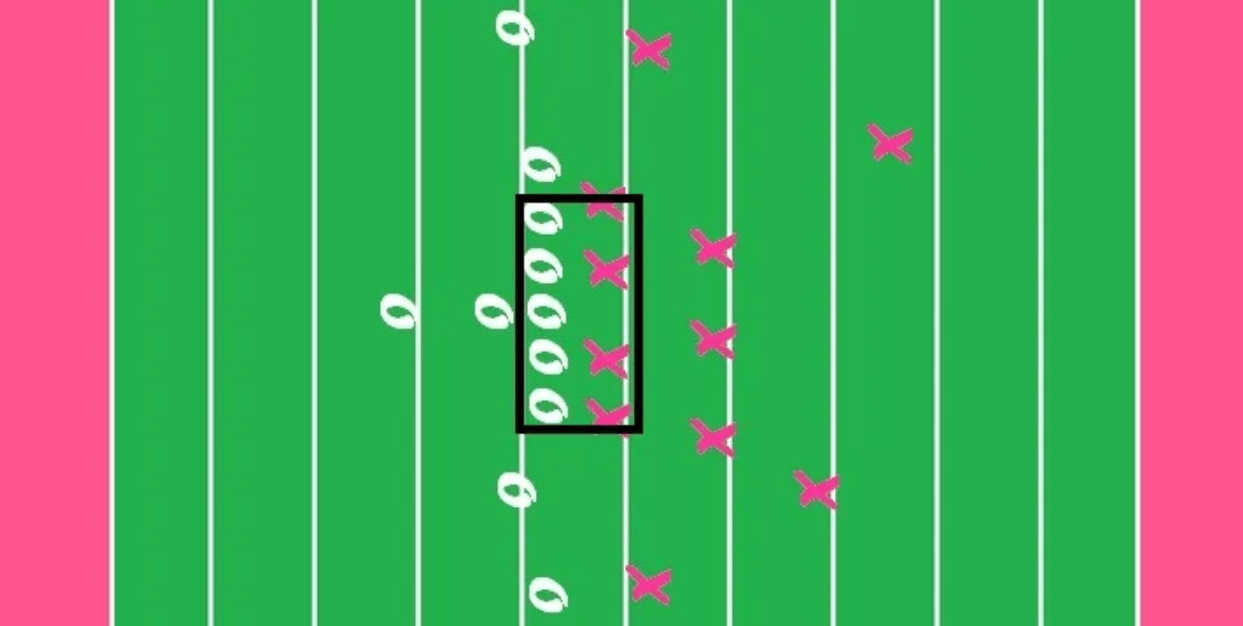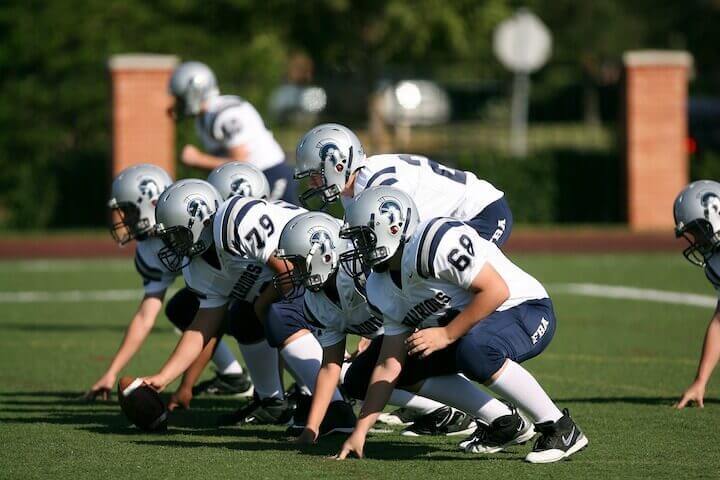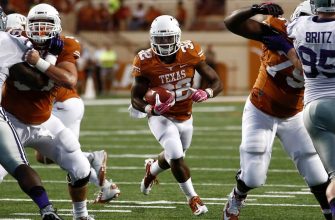Football is a game of strategy and formations, where every inch of the field matters. One crucial aspect that often comes up in football discussions is “the box.” But what exactly is the box in football? In this comprehensive guide, we will explore the concept of the box, its purpose, how it is used by both offense and defense, and the impact it has on the game.
Understanding the Box: An Imaginary Area

The box in football is an imaginary rectangular area on the field that extends from the line of scrimmage, about 3-5 yards deep into the defensive backfield. Its width is determined by the offensive line, making it as wide as the offensive line itself. This area serves as a key reference point for both offensive and defensive teams to analyze and strategize their plays.
Purpose of the Box: Reading the Defense
The box plays a crucial role in the game, as it helps offensive coaches and players quickly determine the defensive alignment. By looking at the number of defenders within the box, they can assess whether the defense is gearing up to stop the run or preparing for a potential passing play. This information allows the offense to make adjustments and call audibles based on the defensive formation.
Offensive Use of the Box: Gaining an Advantage
Offensive teams analyze the box to determine how to exploit the defense’s alignment. If there are fewer defenders in the box, the offense may consider running the ball, taking advantage of the open lanes. On the other hand, if the box is stacked with defenders, the offense might opt for a passing play, targeting the areas left vulnerable by the defense.
Defensive Use of the Box: Stopping the Run
Defensive teams utilize the box to counter the offensive strategy. When the defense “stacks the box,” they bring additional players into the box to bolster their run defense. By doing so, they aim to stop the running back from gaining significant yardage and force the offense into more challenging passing situations. However, stacking the box leaves the defense susceptible to deep passing plays.
Reading the Box: Adjusting the Game Plan
The number of players within the box at the start of a play significantly impacts the offensive and defensive strategies. Quarterbacks and coaches carefully observe the box to assess the defense’s intentions. If the box is stacked, indicating a run-heavy defense, the offense might opt for a passing play. Conversely, if the box has fewer defenders, suggesting a focus on pass coverage, the offense may lean towards a running play.
Players in the Box: Defensive Linemen and Linebackers
Typically, the box is occupied by defensive linemen and linebackers. In a 4-3 defense, four defensive linemen and three linebackers fill the box, while a 3-4 defense features three defensive linemen and four linebackers. These players are responsible for defending against the run and disrupting the offensive plays within the box.
The Tackle Box: Offensive Considerations
While the box primarily refers to the defensive area, there is also an offensive counterpart known as the tackle box. The tackle box extends five yards back into the offensive backfield and covers the width of the offensive line. Quarterbacks must be cautious when throwing the ball within the tackle box to avoid being penalized for intentional grounding.
Exploiting the Eight in the Box: Offensive Strategies
When the defense brings an extra player into the box, creating an “eight in the box” situation, the offense must adjust its strategies accordingly. With one additional defender close to the line of scrimmage, the offense may face challenges in running the ball effectively. However, this can create opportunities for the offense to exploit the areas left open by the defense through well-executed passing plays.
Impact on Play Calling: Shaping the Game
The box’s composition influences play calling and overall game strategy. Coaches and quarterbacks carefully analyze the number of defenders in the box to make informed decisions about whether to run or pass the ball. This analysis allows them to adapt their game plan and exploit the weaknesses in the defense, ultimately shaping the outcome of the game.
Examples from Football History: The Battle of Strategies

Throughout football history, numerous games have showcased the strategic battle revolving around the box. The 2002 Rose Bowl between Miami and Nebraska serves as a prime example. Miami, a two-back football team with a balanced run-pass ratio, faced Nebraska’s traditional 8-man front defense. The game illustrated how both teams schemed against each other to gain an advantage within the box, ultimately showcasing the importance of strategic decision-making.
Conclusion: The Box as a Strategic Tool
In conclusion, the box in football represents an imaginary area on the field that plays a pivotal role in determining offensive and defensive strategies. It serves as a reference point for coaches, quarterbacks, and players to read the defense, make adjustments, and exploit vulnerabilities.
Understanding the dynamics of the box allows teams to leverage their strengths, adapt to the game situation, and gain a competitive edge in the game of football.








